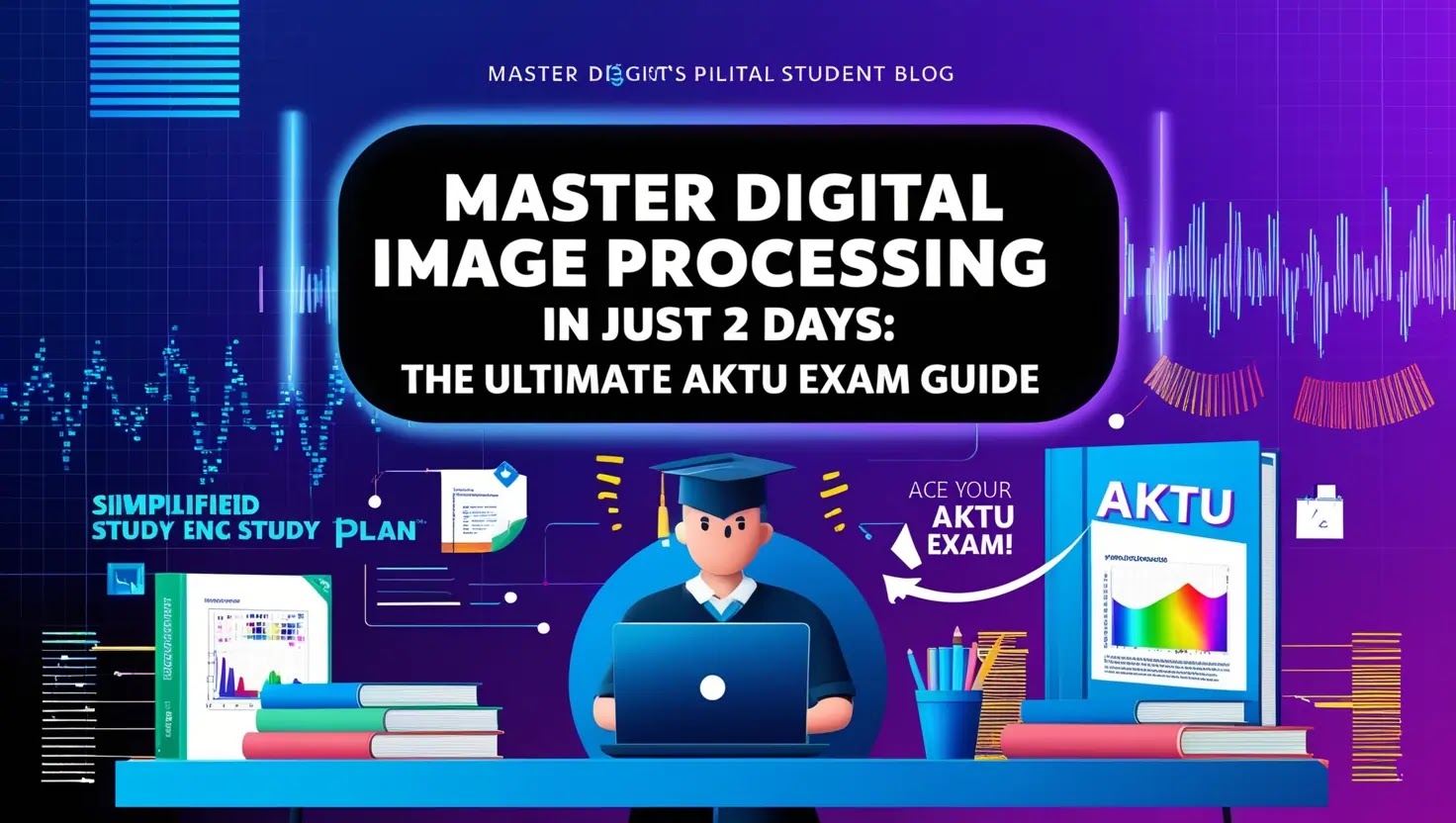Struggling to prepare for your Digital Image Processing (IP) exam? Whether you're an AKTU student or preparing for a similar university exam, we've got you covered. This guide simplifies the subject, focusing on high-impact, exam-relevant topics, so you can study smart and ace the test. With clear prioritization and an easy-to-follow plan, you’ll feel confident tackling even the toughest questions.
Table of Contents
Are you feeling overwhelmed with your upcoming Image Processing (IP) exam? Don’t worry—you’re not alone, and you’ve got this! With the right plan, you can focus on high-impact topics, skip unnecessary complexities, and make the most of your time. Let’s dive into a step-by-step rescue plan designed to help you ace the exam in just two days of dedicated study.
Why This Plan Works
Prioritization: We’ll cover foundational and scoring topics first.
Efficiency: Skip overly complex or rarely asked material.
Clarity: Simple explanations, diagrams, and practical tips make learning easier.
Day 1: Build Your Foundation and Cover Key Applications
Morning (3-4 Hours): Unit I – Digital Image Fundamentals
This unit forms the base for everything else. Here’s what to focus on:
Key Topics:
Steps in Digital Image Processing (from acquisition to display).
Image Sampling and Quantization (how images turn into pixels).
Color Models (RGB and HSI basics).
Relationships Between Pixels (adjacency and connectivity).
How to Study:
Summarize each topic into 2-3 bullet points.
Use diagrams to visualize concepts (e.g., HSI cone, pixel grids).
Why It Matters: These fundamentals often appear in questions like “explain quantization” or “steps in image processing.”
Afternoon (3-4 Hours): Unit II – Image Enhancement
Enhancement techniques are practical and scoring—a must-know area.
Key Topics:
Histogram Equalization (improves image contrast).
Spatial Filters: Smoothing (blurring) and Sharpening (edge enhancement).
Frequency Filters: Basics of Gaussian and Butterworth filters.
How to Study:
Solve a simple histogram equalization problem.
Understand filters with visuals:
Smoothing = noise reduction.
Sharpening = edge highlighting.
Why It Matters: Questions often test the purpose and types of filters.
Evening (3-4 Hours): Unit V – Image Compression & Recognition
This unit is direct and scoring, making it perfect for day one.
Key Topics:
Huffman Encoding (shorter codes for frequent data).
JPEG Compression (step-by-step process).
Boundary and Regional Descriptors (simple shape representation).
How to Study:
Write down key points on JPEG compression.
Grasp basic descriptors like Fourier for shape recognition.
Why It Matters: Compression techniques are easy to understand and often appear in exams.
Day 2: Advanced Topics, Segmentation, and Revision
Morning (3-4 Hours): Unit III – Image Restoration
This unit focuses on practical noise removal methods.
Key Topics:
Noise Models (Gaussian, Salt-and-Pepper).
Filters: Mean and Wiener Filters.
Degradation Model (basic idea).
How to Study:
Learn 1-2 noise types with examples.
Memorize filter purposes:
Mean Filter = averages noise.
Wiener Filter = removes blur and noise.
Why It Matters: Questions here often focus on filters or noise removal.
Afternoon (3-4 Hours): Unit IV – Image Segmentation
Segmentation can be challenging but is important for ROI extraction.
Key Topics:
Edge Detection: Sobel and Canny techniques.
Thresholding: Separating objects from the background.
Morphological Operations: Erosion and Dilation.
How to Study:
Understand edge detection: Sobel = gradient-based, Canny = multi-step.
Practice thresholding with grayscale-to-binary examples.
Use before-and-after diagrams for morphological processes.
Why It Matters: These techniques are frequently tested for their practical applications.
Evening (3-4 Hours): Revision and Practice
What to Do:
Review summaries and diagrams from all units.
Write down key formulas (e.g., JPEG steps, filters).
Solve 2-3 past questions from each unit.
Why It Matters: Active recall cements knowledge and boosts confidence.
Additional Tips for Success
Use Diagrams: They simplify topics like histograms, filters, and segmentation.
Focus on Definitions and Applications: Avoid diving into detailed derivations.
Practice Smart: Past questions highlight commonly tested areas.
Take Breaks: Short breaks improve focus and retention.
Stay Positive: Confidence and a calm mind make a huge difference.
Final Thoughts
You’re closer to success than you think! This plan isn’t about cramming—it’s about smart study. Stick to the essentials, trust the process, and believe in yourself. You’ve got what it takes to excel. Let’s make this exam your triumph!


